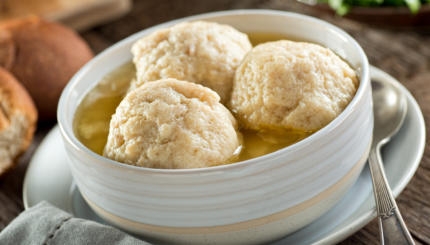Jewish dietary laws, the origins of which are in biblical law, have a variety of explanations within the Bible itself, and those explanations have themselves been the subject of multiple interpretations. Later generations of Jewish scholars and writers sought to make sense of these laws in innovative ways that reflect their changing times.
The Bible’s limitations on the types of animals that may be consumed are explained as a means of avoiding “abominations” of which other, pagan nations were guilty. Here, a social agenda can be seen behind the law: the creation of a distinct and “holy” Israelite nation. This theme is extended in later rabbinic restrictions on consuming bread, oil, or wine made by non-Jews. Some modern thinkers, too, focus on Jewish social distinctness as a major theme in kashrut.
Contemporary anthropologists see in the biblical categorizations of animals fit for consumption the reflection of a desire to attain holiness through strict category separation, by consuming only those animals that are the most “complete” examples of their class. Land animals should be herbivorous (ensured by the requirement that they chew their cud and have a cloven hoof), water animals should be fully locomotive in water (thus the insistence on fins and scales), and birds should be capable of flight and not be birds of prey.
Jews in the Hellenistic world of late antiquity interpreted kashrut as they did most or all of Jewish practice: as allegorical acts intended to teach universal philosophical truths.
Explaining kashrut as a system of hygiene and healthy diet is at least as old as the 13th century, when the philosopher and physician Maimonides suggested that all forbidden foods are damaging to the human body. This mode of interpretation was common among medieval and modern Jews, but it has met with constant opposition both on an empirical basis–are observant Jews really more healthy than others?–and on the grounds that it trivializes rules of deep religious significance.
Maimonides also concurred with the suggestion, offered before his time and since, that the strictures of kashrut are intended to curb our appetites, not only for medical reasons but also as a part of a more general effort as self-improvement, by inculcating habits and traits of self-restraint.
Interpreters of the Bible as far back as rabbinic times have explained some dietary laws as expressing compassion for animals. The prohibition on cooking a kid in its mother’s milk was understood this way by the thinker Philo in first-century Alexandria, and by some medieval commentators. Such an explanation is also offered for the prohibition against slaughtering both parent and offspring on one day, the requirement that a mother bird be chased away before any of its young are taken from the nest, and other biblical laws. This principle was applied in the rabbinic rules for slaughtering, which were designed to hasten the animal’s unconsciousness and its death, sparing it pain.
Finally, some interpreters of Judaism in modern times have presented the observance of kashrut first and foremost as a means of living in accord with the divine will. This is a theme well understood by the classic rabbinic sage who directed his adherents not to express disgust with nonkosher food. He advised them instead to say, “I want it! I want it! But the Holy One has declared it off-limits.”
Some contemporary Jews have linked their observance of kashrut with health and environmental concerns, seeing these as natural outgrowths of some traditional reasons behind the Jewish dietary laws.
kashrut
Pronounced: kahsh-ROOT, Origin: Hebrew, the Jewish dietary laws.
kosher
Pronounced: KOH-sher, Origin: Hebrew, adhering to kashrut, the traditional Jewish dietary laws.



